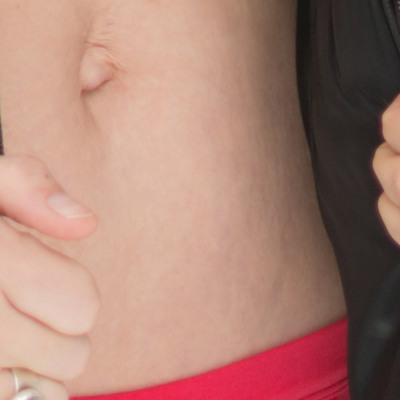-
Posts
210,423 -
Joined
-
Last visited
-
Days Won
3,404
Everything posted by Damien Symonds
-
Hi Mankro, this will be tricky, but I'm sure we can manage something. The first question is - do you have another photo of the back at the same angle, without the roll?
-
I've played around with a few methods, and I think your best option is a Hue/Saturation layer with the "Colorize" box checked. When you do the first photo, you could find a value on the Hue slider that you liked. You'd also adjust the Saturation and Lightness to how you liked it. You'd mask very carefully around the subject. This will be very handy. Then, you'd keep that photo open, while one at a time opening the others beside it on your screen. For each one, you'd use the same Hue value, but carefully vary the Saturation and Lightness sliders to get the best possible match.
-

Screen gone crazy after calibrating
Damien Symonds replied to Yve's topic in Monitor calibration questions or problems
Did you have any luck? -
Hi Heather, I would do it with the Patch Tool, similar to eye bags. A little bit of cloning would be necessary too, near the hem of the pants. First, take them out altogether on a new layer: Then lower the opacity of that layer to a point that you think she'll like (this is 69%): And of course the beauty of it is, if she comes back and says she'd like them more or less visible, just return to your PSD file and tweak the layer opacity further.
-
The missing paws will be the killer here. You could conceivably take another photo of grass to put in there, but you'd need to find another photo of the paws at the same angle, and that is likely to be next to impossible
-

Richer colors in beach photos?
Damien Symonds replied to tropicmom's topic in How to achieve a certain look or effect
The one you linked either had detail in the capture, or the sky was replaced. -

Best way to cut out a baby from a background
Damien Symonds replied to shirly526's topic in Help with editing
Yes, that will be the trickiest part for sure. Around the feet will need some artificial shadowing. Yep, do this first, then show me. -

Best way to cut out a baby from a background
Damien Symonds replied to shirly526's topic in Help with editing
Yes, that might work. -

Best way to cut out a baby from a background
Damien Symonds replied to shirly526's topic in Help with editing
Principally, the problem is the lighting. Your baby photo is so dimly lit, but the ornament is so brightly lit. You need to go back to your raw processing of the baby photo, and make it brighter. -

Best way to cut out a baby from a background
Damien Symonds replied to shirly526's topic in Help with editing
Yep, that's good. That's the right way to do it. -

Best way to cut out a baby from a background
Damien Symonds replied to shirly526's topic in Help with editing
Is it a jpeg? NEVER do this. Put the new background on the baby photo, not the other way around. http://www.damiensymonds.net/2010/09/extract-then-copy-vs-copy-then-extract.html -
Yep, just careful cloning.
-

Richer colors in beach photos?
Damien Symonds replied to tropicmom's topic in How to achieve a certain look or effect
Hi tropicmom, in order to enrich the background of a photo like this, there has to be some detail to work with. If you lower the Exposure on your photo, is there some detail in the white areas? -
The class-related topics. For other stuff, just post a new question right here in Ask Damien.
-
I understand there is a group on Facebook called "Find a retoucher".
-

Calibration issues with ASUS VS239H
Damien Symonds replied to acmc's topic in Monitor calibration questions or problems
A couple more questions ... How many screens does your computer have? Is it a desktop computer with just this Asus monitor? Or is it a laptop with the Asus plugged in to it? Also, are you very certain that the Munki preferences are set to a "Version 2" profile, rather than Version 4? -

Calibration issues with ASUS VS239H
Damien Symonds replied to acmc's topic in Monitor calibration questions or problems
It sounds like you're trying to correlate the monitor's brightness setting to the calibrator's brightness reading? Those will never be the same. My screen here is on 27 for the monitor to achieve a reading of 80, for example. After doing this, you have to calibrate again. -
Then I'm so sorry, we can't really help
-

Extracting a background from hair
Damien Symonds replied to Nancy Jones's topic in Questions about tutorials and articles
Nice. -
Yes, may we see 100% crops from both faces?
-
It's a good start, but there are some green areas remaining. Particularly the shoulder.




